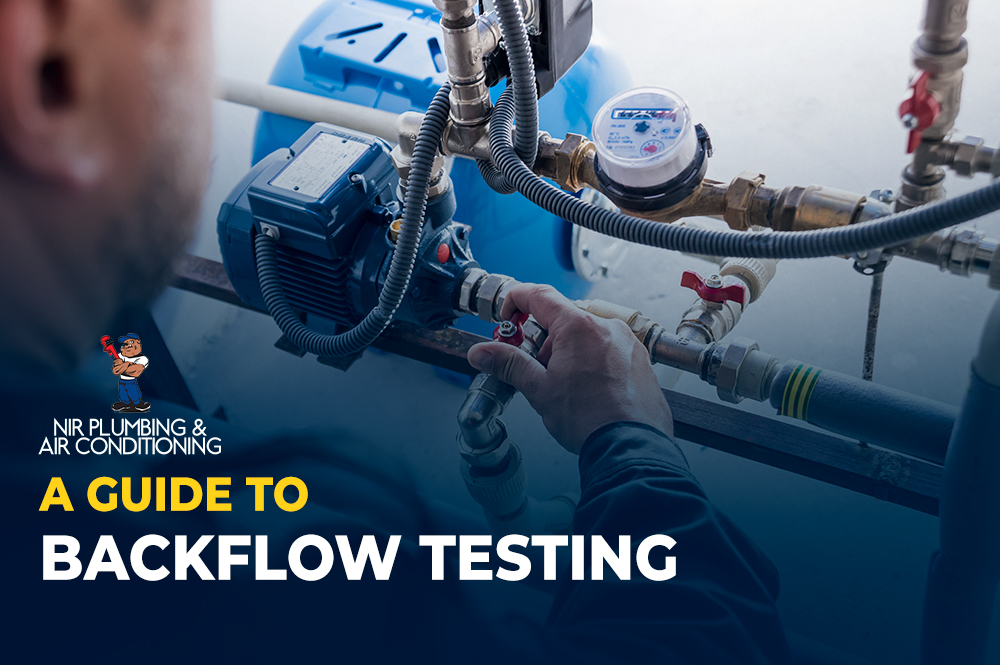Overview: Protect your health and safety by ensuring your plumbing system is functioning correctly and preventing contaminated water from entering your drinking supply. Learn everything you need to know about backflow testing in this comprehensive guide !
Drinking plenty of water every day is a must, but it won’t do you any good if your water has the potential to make you sick. That’s why you should be aware of backflow testing. Backflow testing ensures your water supply is protected from any harmful contaminants.
Backflow testing might not be one of the first things you think of when you think about plumbing maintenance, but it’s essential for protecting our health and safety. Think of it like brushing your teeth — not a fun activity, but one that’s necessary to keep your pearly whites healthy and strong. Similarly, backflow testing ensures that our plumbing systems are working correctly and that no contaminated water is seeping back into the main supply.
In this guide, we’ll take you through everything you need to know about backflow testing, including why it’s important, how it’s done, and when you should have it done.
What Is Backflow Testing?
Backflow testing is the process of checking your plumbing system to ensure that your drinking water is safe from contamination. This might involve the installation of a backflow prevention device — or, if a device already exists, checking it to see if it is functioning properly.
Our drinking water supply is under constant threat from pollutants and harmful substances. Backflow testing ensures that any water that comes into contact with these pollutants is redirected away from the main supply and disposed of safely.
>> Related Reading: Backflow Testing: What Is It?
Why Is Backflow Testing Important?
Backflow testing is important because it protects your health and safety. When your plumbing system is functioning properly, it ensures that clean, safe drinking water flows through your taps. However, if the system fails, contaminated water can seep back into the main supply, putting everyone’s health at risk.
Backflow testing is especially important for commercial and industrial properties that use hazardous chemicals or other pollutants in their operations. Without proper backflow prevention, these contaminants can easily find their way into the main water supply and pose a serious health risk.
>> Related Reading: What to Expect During Backflow Testing
How to Get Backflow Testing Done
The first step in getting backflow testing done is to find a licensed and certified professional who specializes in this type of testing. They’ll come to your property and perform a comprehensive inspection of your plumbing system to identify any potential risks or hazards.
During the inspection, the tester will check the valves, pressure regulators, and other devices in place that help prevent backflow. They’ll verify that your plumbing system is sufficiently set up to prevent backflow in compliance with local plumbing codes. They may check for leaks and pressure loss, and they may simulate a backflow event to observe how your plumbing system responds.
If any issues are identified during the backflow inspection, the tester will provide you with a detailed report outlining what needs to be done to correct the problem. They’ll also give you an estimate of the cost and timeframe for any necessary repairs.
How Often Should You Get Backflow Testing in California?
The frequency of backflow testing depends on a few factors — such as the type of property, the level of risk involved, and any regulations or requirements in your local area. In general, it’s recommended to have backflow testing done annually to ensure your plumbing system is functioning correctly and to comply with any regulatory requirements.
In California, the State Water Resources Control Board’s Division of Drinking Water oversees regulations related to backflow prevention and cross-connection control. The regulations require that all public water systems have a cross-connection control program in place to prevent the contamination of the water supply. This includes the installation of backflow prevention devices and annual testing of these devices to ensure they’re functioning correctly.
Additionally, many local water agencies in California have their own regulations regarding backflow prevention and testing. It’s essential to check with your local water agency to determine what specific requirements apply to your property.
The bottom line is, it’s essential to stay up to date with backflow testing regulations and requirements in your area to ensure the safety and quality of your drinking water supply.
In Summary
Backflow testing may not be the most glamorous topic, but it’s an essential part of maintaining the safety and quality of our drinking water. By understanding what it is, why it’s important, and how to get it done, you can ensure that your plumbing system is functioning properly and your drinking water is safe for you, your employees, and your customers. So don’t wait!
Get your backflow testing done today and enjoy peace of mind knowing that you’re doing your part to protect your health and safety. Reach out to NIR Plumbing today and get your backflow testing done by the experts!


